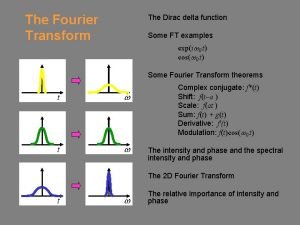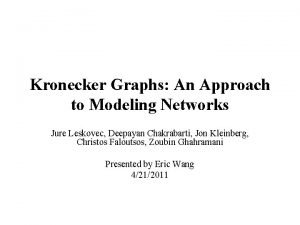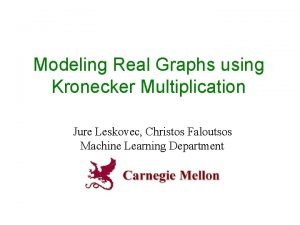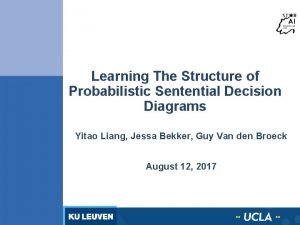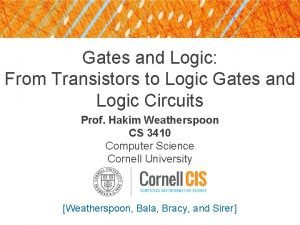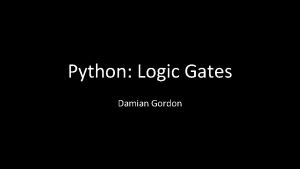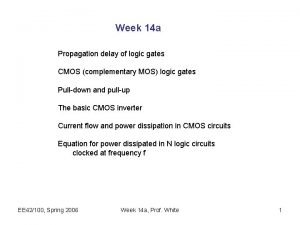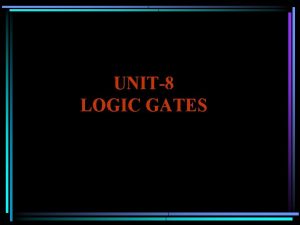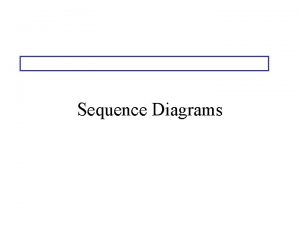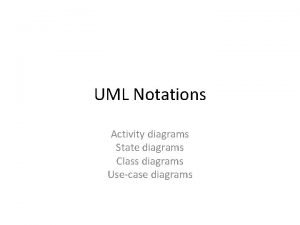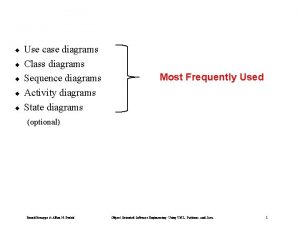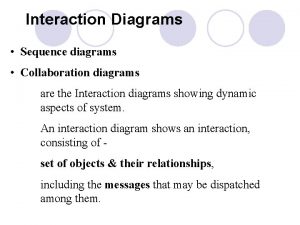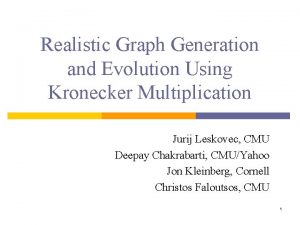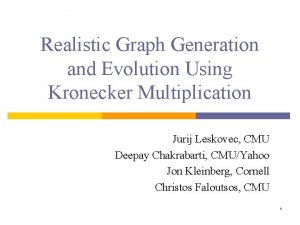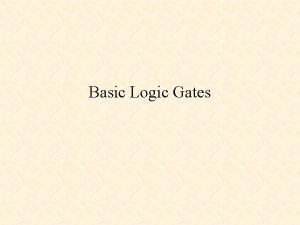Davio Gates and Kronecker Decision Diagrams Lecture 5


























- Slides: 26

Davio Gates and Kronecker Decision Diagrams Lecture 5 Rolf Drechlser’s slides used

Absolutely Minimum Background on Binary Decision Diagrams (BDD) and Kronecker Functional Decision Diagrams • BDDs are based on recursive Shannon expansion F = x Fx + x’ Fx’ • Compact data structure for Boolean logic – can represents sets of objects (states) encoded as Boolean functions • Canonical representation – reduced ordered BDDs (ROBDD) are canonical – essential for simulation, analysis, synthesis and verification

BDD Construction • Typically done using APPLY operator • Reduction rules – remove duplicate terminals – merge duplicate nodes (isomorphic subgraphs) – remove redundant nodes a b f f b • Redundant nodes: – nodes with identical children a b c 0 1

BDD Construction – your first BDD • Construction of a Reduced Ordered BDD a b c f 0 0 1 1 0 0 0 1 0 1 0 0 1 1 0 1 0 1 Truth table 1 edge 0 edge f f = ac + bc a b b c 0 0 c 1 Decision tree 0 1

BDD Construction – cont’d f f a a b b b c c 0 f = (a+b)c c c 1 1. Remove duplicate terminals c 0 a b b c 1 2. Merge duplicate nodes c 0 1 3. Remove redundant nodes

Decomposition types are associated to the variables in Xn with the help of a decomposition type list (DTL) d: =(d 1, …, dn) where di { S, p. D, n. D}

KFDD • Definition

Three different reductions types Type I : f g xi xi Each node in a DD is a candidate for the application f g xi

Three different reductions types (cont’d) Type S xi xj xj f g

Three different reductions types (cont’d) Type D xi 0 This is used in functional diagrams such as KFDDs xj xj f g

Example for OKFDD 1 x 1 F=

Example for OKFDD (cont’d) This diagram below explains the expansions from previous slide X 1 S-node X 2 p. D-node X 3 n. D-node

Example for OKFDD’s with different DTL’s You can save a lot of nodes by a good DTL

Complement Edges They can be applied for S-nodes They can be applied for D-nodes This is a powerful idea in more advanced diagrams – any operator on representation

XOR-operation • D-node • S-node Such recursive operations are a base of diagram creation and operation

AND-operation Such recursive operations are a base of diagram creation and operation

Restriction of Variables for S nodes is trivial Xi=0 xi f Xi=1 S-node g f Cofactor for Xi=0 g Cofactor for Xi=1

Restriction of Variables for D nodes is more complex, requires XORing Xi=0 p. D-node xi f g f Please remember this Xi=1

Restriction of Variables (cond’t) Xi=1 n. D-node xi f g f Xi=0

Optimization of OKFDD-Size • Exchange of Neighboring Variables • DTL Sifting

Experimental Results

Experimental Results (cont’d)

DIY PROBLEM • Use simulated annealing algorithm for choice of a better variable ordering of the OKFDD



Simple solution • Solution space X 1 X 2 X 3 X 4 X 1 X 2 A solution • Neighborhood structure X 1 X 2 X 3 X 4 X 1 X 3 X 2 X 4 change End of Lecture 5
 Objectives of decision making
Objectives of decision making Slidetodoc.com
Slidetodoc.com Dirac delta function fourier series
Dirac delta function fourier series Ce inseamna sistem compatibil determinat
Ce inseamna sistem compatibil determinat Responda
Responda Kronecker graph
Kronecker graph Kronecker product
Kronecker product Timing diagram of nor gate
Timing diagram of nor gate The interaction diagrams, use case diagrams are called as
The interaction diagrams, use case diagrams are called as Activity diagrams are static diagrams
Activity diagrams are static diagrams 01:640:244 lecture notes - lecture 15: plat, idah, farad
01:640:244 lecture notes - lecture 15: plat, idah, farad Sentential decision diagrams
Sentential decision diagrams Decision theory lecture notes
Decision theory lecture notes Sargur srihari
Sargur srihari Decision tree and decision table
Decision tree and decision table Transistor truth table
Transistor truth table Bill gates achievements and awards
Bill gates achievements and awards Combinational circuit design and simulation using gates
Combinational circuit design and simulation using gates Simulation and testing of logic circuits
Simulation and testing of logic circuits Logic gates and truth tables
Logic gates and truth tables Tautology in python
Tautology in python Warren buffett and bill gates
Warren buffett and bill gates Logic gates and
Logic gates and What is propagation delay in logic gates
What is propagation delay in logic gates Sfra gates
Sfra gates Rufus gates
Rufus gates Nehemiah 3 gates
Nehemiah 3 gates


